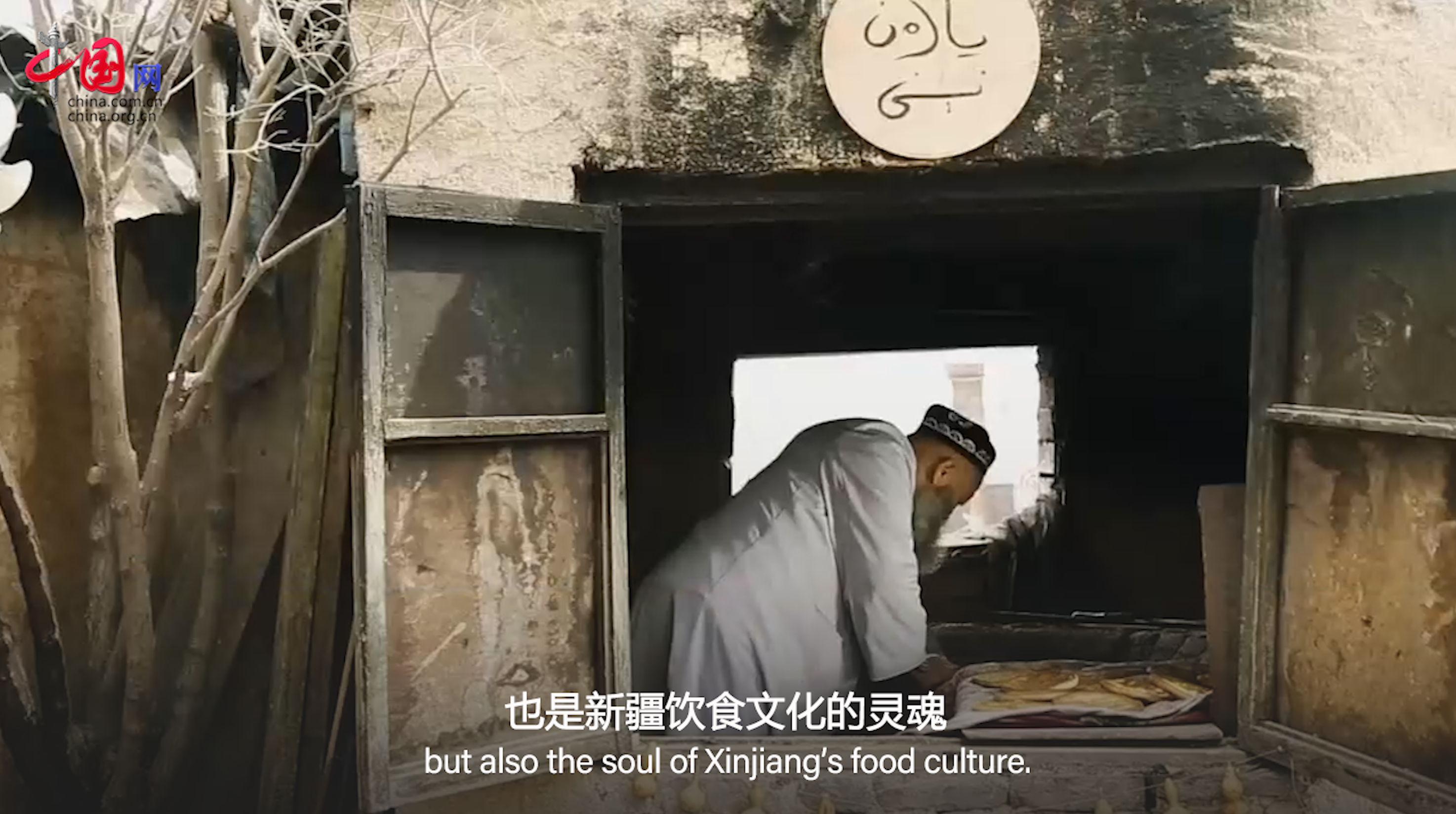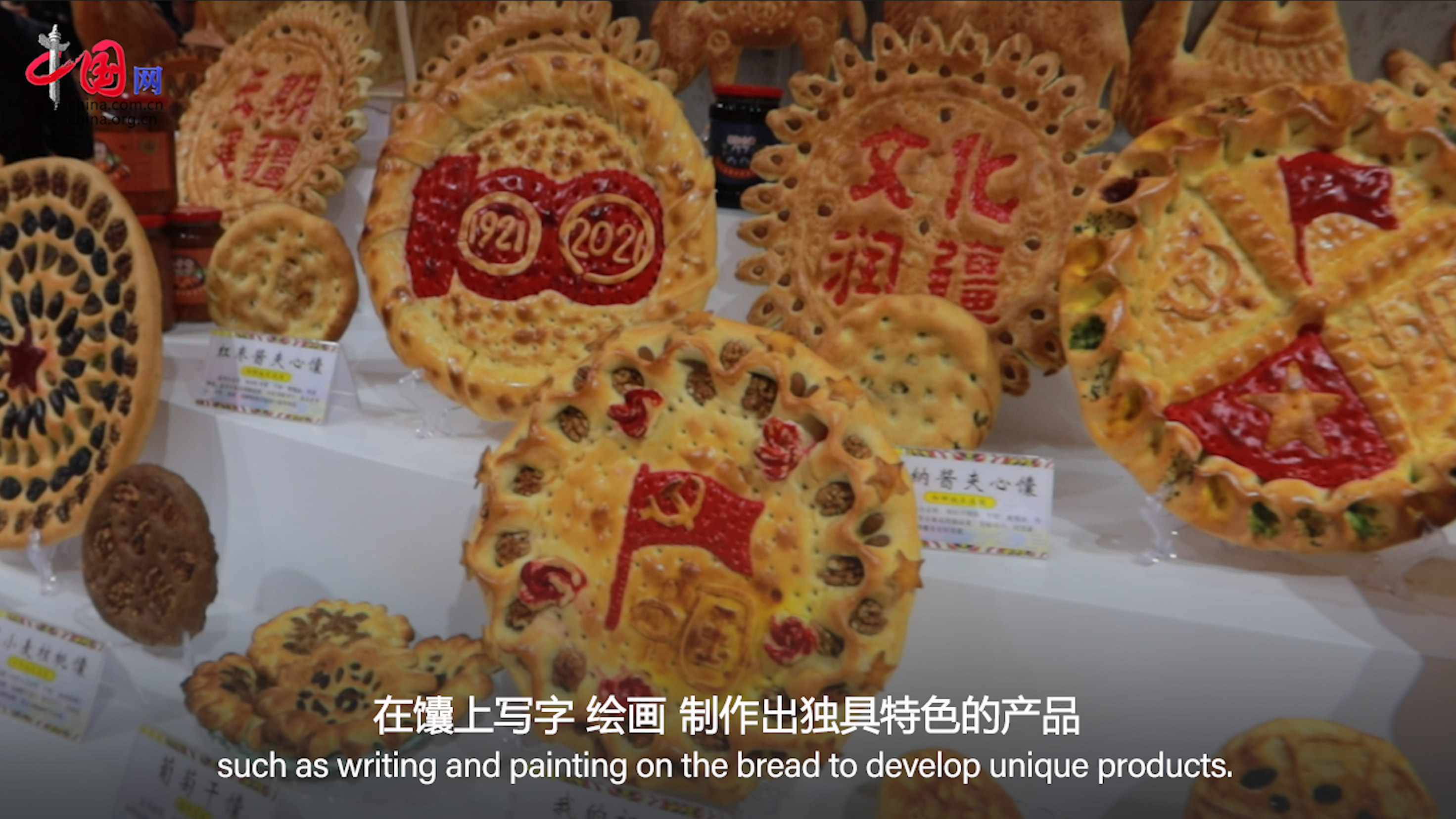新疆馕 | 穿越千年的新疆“味”
|
|
中國新疆,有一種美食叫馕。馕的叫法,出自古波斯語,意為面包,已有兩千多年的歷史。
Naan is a delicious local food in northwest China’s Xinjiang. Named in ancient Persian, naan is a kind of bread with a history of more than 2,000 years.

早在漢朝開創絲綢之路時,往來的商旅們便帶著馕充饑,經數月也不會發霉變質。
As early as the Han Dynasty (B.C. 202 - A.D. 8) when the Silk Road was chartered, the business travelers would carry naan bread as food, which would not go stale for months.
如今,一張小小的馕,不僅是能填飽肚子的干糧,也是新疆飲食文化的靈魂。
Nowadays, a small piece of naan is not only the staple food to fill the stomach, but also the soul of Xinjiang’s food culture.
【新疆美食傳創者|龔浩榮】
在新疆“可以一日無肉,不可一日無馕”。馕在我們新疆家喻戶曉,有各民族各派系,比如像它這個叫玉米馕,一碗奶茶、一個馕,非常地經典。馕便于保存、便于攜帶,也是新疆人待客的招牌主食。
【Gong Haorong, food lover and developer】
It’s said that in Xinjiang, one can spend one day without meat, but cannot endure a day without eating naan. As a household food, naan has a wide range of variety depending on different ethnic groups. For example, this is called corn naan. A bowl of milk tea and a piece of naan bread is a very classic food combination. Naan is easy to preserve and carry, and it is also the signature staple food for Xinjiang people to entertain guests.

新疆人對馕格外珍視,用餐講究細嚼慢咽,通常將馕掰成若干個小馕塊,泡在肉湯、奶茶里食用,掰馕是新疆食馕文化的重要一部分。在新疆人的觀念里,馕要懂得與人分享,圓圓的馕也象征著團結友好。
Xinjiang people cherish naan very much, and they enjoy it in a sophisticated manner. They usually break naan into several small pieces and soak them in broth and milk tea before eating. Breaking naan into pieces is an important part of naan culture in Xinjiang as they believe naan should be shared with others and its round shape stands for solidarity and good will.

擁有兩千多年歷史的馕,在新疆人的手里不斷傳承和創新。一張直徑7.1米的馕屹立在新疆烏魯木齊馕產業園內,成為新疆旅游打卡的新地標。據統計,現有的馕品類已達到300多種,從傳統的馕坑烘烤,到現代化機械生產,口感上從單一的味道,融入了很多個性化的定做,比如添加了辣椒的辣皮子馕,口感咸辣,別有一番滋味。
With a history of more than 2,000 years, naan has been inherited and innovated by Xinjiang people. A 7.1-meter-diameter naan stands in the Naan Industrial Park in Urumqi, capital city of Xinjiang, becoming a new landmark of Xinjiang tourism. Official data showed that Xinjiang is now home to over 300 varieties of naan. The making of naan has evolved from the traditional pit baking to modern machinery production. Its taste varies in line with personalized ingredients. For example, the naan tastes salty and spicy when added with pepper.

馕師傅在傳統馕的基礎上,融合現代化的元素,在馕上寫字、繪畫,制作出獨具特色的產品,亮相于國內、國際各大展覽會上,吸睛無數,新疆馕正在突破國界,讓更多人看到新疆馕的魅力。
Naan-making masters integrate modern elements with traditional naan-making such as writing and painting on the bread to develop unique products. These innovative naan products are eye-catching in domestic and international major exhibitions, allowing Xinjiang naan to share its charm over the border.

一張小小的新疆馕,在時間的長河里,散發著屬于新疆“味”的獨特魅力,向著“民族的就是世界的”出發!
The time-honored naan, full of Xinjiang local culture, is rolling on the global stage thanks to its unique ethnic features.
